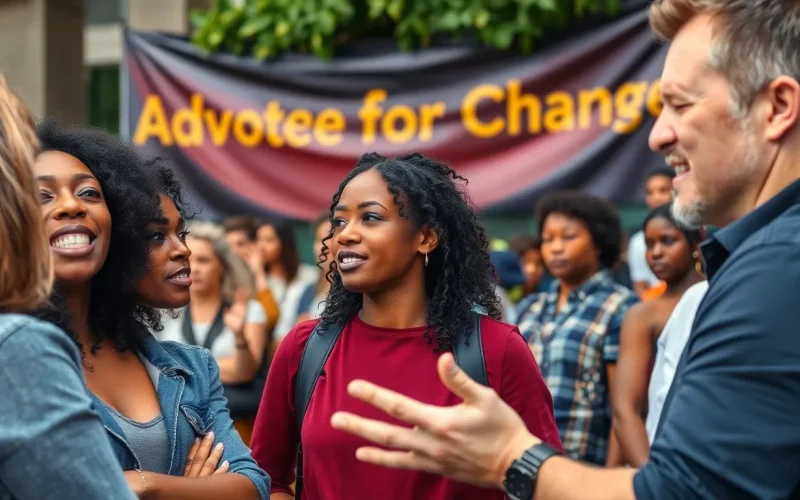Table of Contents
ToggleIn a world overflowing with information, influential editorials cut through the noise like a hot knife through butter. They hold the power to shape opinions, ignite conversations, and even spark movements. Imagine a piece so compelling that it has the potential to change minds and inspire action—now that’s the magic of a well-crafted editorial.
These pieces aren’t just random musings; they’re the brainchildren of skilled writers who know how to blend facts with flair. Whether it’s a witty take on current events or a passionate plea for change, influential editorials engage readers and keep them coming back for more. So buckle up as we dive into the art of editorial writing, where every word counts and every sentence could be the one that tips the scales.
Overview of Influential Editorials
Influential editorials hold significant power in shaping public discourse. They often address pressing issues such as politics, social justice, and environmental concerns. These pieces utilize persuasive language and well-researched arguments to engage readers effectively. Skilled writers balance facts and emotion, creating a compelling narrative that resonates with the audience.
Editorials serve as platforms for advocacy, guiding readers to consider different perspectives. They often encapsulate the collective sentiments of a community or society, reflecting public opinion while challenging it. Effective editorial writing requires clarity, precision, and a strong understanding of the target audience.
The impact of influential editorials extends beyond the written word. They can spark movements, inspire change, and lead to tangible actions. Through captivating headlines and strong conclusions, these articles captivate readers’ attention from start to finish. They encourage dialogue, drawing readers into deeper discussions about critical issues.
Readers rely on editorials for insight, often turning to them during significant events to understand various viewpoints. The messages conveyed can shape perceptions and influence decision-making. This interconnectedness between editorial content and public reaction highlights the responsibility of writers to deliver thoughtful and engaging material.
Strong editorials not only inform but also motivate. They challenge complacency, pushing individuals toward informed action and awareness. Prominent examples throughout history demonstrate how editorials have played pivotal roles in cultural and political shifts, marking them as essential elements of modern discourse.
Historical Context

Influential editorials have a rich history, reflecting societal changes and cultural movements. These pieces often provide insight into public sentiments and political climates.
Evolution of Editorials Over Time
Editorials have transformed significantly since their inception. Early forms focused on opinion pieces within newspapers, primarily addressing local concerns. As media diversified, so did editorial styles, incorporating various perspectives and platforms. The advent of the internet has accelerated this change, allowing for instant publication and wider reach. Today, influential editorials span blogs, social media, and online news outlets. Each format encourages interaction and discussion, enhancing their impact on readers. Furthermore, the use of data-driven arguments alongside emotional appeals has become prominent, creating a blend that resonates with diverse audiences.
Key Historical Influential Editorials
Several editorials have left a lasting mark on history. The “Ain’t I a Woman?” piece by Sojourner Truth in 1851 brought attention to women’s rights and racial equality. The “The Danger of a Single Story” by Chimamanda Ngozi Adichie shed light on narratives that oversimplify cultural identities. Another significant work, the “We Should All Be Feminists” essay by Adichie, advocates for gender equality and has sparked global conversations. Editorials like these not only reflect societal challenges but also motivate people toward social change. Their ability to connect personal experiences with broader issues solidifies their relevance and importance in shaping discourse.
Key Characteristics of Influential Editorials
Influential editorials share several key characteristics that contribute to their power and effectiveness. These traits enable them to resonate with readers and shape public discourse.
Strong Argumentation
Strong argumentation forms the backbone of influential editorials. Authors present well-researched facts and data to support their claims. Each point stands on its own and contributes to the overall message. Citing credible sources, such as studies and expert opinions, strengthens the argument. Challenging opposing views enhances the editorial’s persuasive value. By anticipating counterarguments, writers foster a sense of trust and credibility. Engaging readers through logical reasoning encourages deeper contemplation on critical issues. Well-crafted arguments not only inform but also inspire action, making them essential elements of impactful editorials.
Effective Persuasive Techniques
Effective persuasive techniques captivate readers and drive the editorial’s message home. Employing emotional appeals allows writers to connect with their audience on a personal level. Vivid language paints a picture, drawing readers into the narrative. Rhetorical questions provoke thought and invite reflection. Repetition of key phrases reinforces critical points, ensuring the message sticks. Moreover, using anecdotes and real-life examples brings abstract issues into relatable contexts. A clear tone and engaging style maintain interest while guiding readers through complex subjects. Together, these techniques create a compelling editorial that not only informs but also motivates readers toward understanding and action.
Impact of Influential Editorials
Influential editorials play a crucial role in shaping societal perspectives and prompting political responses. These pieces often reflect shifts in public sentiment.
Societal Changes
Influential editorials catalyze societal change by articulating the struggles and aspirations of marginalized groups. Sojourner Truth’s “Ain’t I a Woman?” powerfully addressed gender and racial inequalities, igniting conversations around civil rights. Moreover, editorials often frame issues like climate change and social justice, prompting readers to reconsider their views. Adichie’s writings such as “The Danger of a Single Story” encourage awareness of diverse narratives. Collectively, these pieces foster an understanding of cultural dynamics and inspire communities to engage actively in creating positive societal change.
Political Reactions
Political reactions to influential editorials often shape legislative agendas and public policies. Editorials that challenge authority can galvanize opposition, as demonstrated by extensive coverage of environmental issues. They inform voters, guiding them in making informed decisions during elections. An exemplary case includes editorials calling for gun control measures, which have sparked national debates and legislative proposals. This reaction typically underscores the editorials’ power to influence political discourse. Consequently, editorials become a vital tool in advocacy, compelling policymakers to address pressing concerns and reflect the populace’s demands.
Notable Examples of Influential Editorials
Influential editorials often resonate deeply with readers, sparking dialogue and action. They highlight critical societal issues, encourage empathy, and motivate change.
Case Study 1: “Ain’t I a Woman?” by Sojourner Truth
Sojourner Truth’s “Ain’t I a Woman?” stands as a powerful plea for women’s rights and equality. This 1851 speech, delivered at the Women’s Rights Convention in Akron, Ohio, challenged prevailing notions of race and gender. Truth used her own experiences as a Black woman to argue against the discrimination faced by both women and African Americans. Her eloquent rhetoric disarmed prejudices, creating a lasting legacy that inspired future generations to fight for social justice. The impact resonates today as it continues to ignite discussions around intersectionality and the rights of marginalized groups.
Case Study 2: “We Should All Be Feminists” by Chimamanda Ngozi Adichie
Chimamanda Ngozi Adichie’s “We Should All Be Feminists” promotes gender equality through personal storytelling and social commentary. Delivered as a TEDx talk in 2012, this editorial highlights the universal impact of sexism on individuals. Adichie’s engaging style connects with audiences, combining humor and critical insights. By sharing her experiences growing up in Nigeria and witnessing gender disparities, she challenges societal norms and advocates for feminism as a movement for everyone. The editorial’s influence extends globally, sparking conversations about feminism’s relevance in various cultural contexts and inspiring activism aimed at dismantling gender-based discrimination.
Influential editorials play a crucial role in shaping public discourse and inspiring action. They bridge the gap between personal experiences and societal challenges, urging readers to reflect on pressing issues. With their blend of facts and emotional resonance, these editorials not only inform but also motivate individuals to engage in meaningful conversations.
The legacy of powerful editorials like Sojourner Truth’s and Chimamanda Ngozi Adichie’s showcases their enduring impact on social movements and cultural narratives. As society continues to evolve, the responsibility of writers to craft compelling editorials remains vital. Each piece has the potential to spark change and challenge complacency, reinforcing the importance of thoughtful discourse in today’s world.





